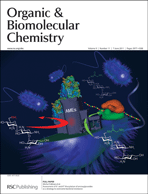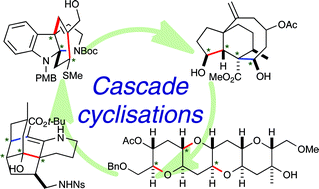This month sees the following articles in OBC that are in the top ten most accessed:-
Carbohydrate chemistry in drug discovery
M. Carmen Galan, David Benito-Alifonso and Gregory M. Watt
Org. Biomol. Chem., 2011, 9, 3598-3610 DOI: 10.1039/C0OB01017K
Gold-catalysed synthesis of amino acid-derived 2,5-disubstituted oxazoles
Christopher L. Paradise, Pooja R. Sarkar, Mina Razzak and Jef K. De Brabander
Org. Biomol. Chem., 2011, 9, 4017-4020 DOI: 10.1039/C1OB05390F
Mannich-Michael versus formal aza-Diels-Alder approaches to piperidine derivatives
P. Ricardo Girling, Takao Kiyoi and Andrew Whiting
Org. Biomol. Chem., 2011, 9, 3105-3121 DOI: 10.1039/C0OB00996B, Perspective
The stimulating adventure of KRN 7000
Aline Banchet-Cadeddu, Eric Hénon, Manuel Dauchez, Jean-Hugues Renault, Fanny Monneaux and Arnaud Haudrechy
Org. Biomol. Chem., 2011, 9, 3080-3104 DOI: 10.1039/C0OB00975J
Highly selective fluorescent OFF-ON thiol probes based on dyads of BODIPY and potent intramolecular electron sink 2,4-dinitrobenzenesulfonyl subunits
Huimin Guo, Yingying Jing, Xiaolin Yuan, Shaomin Ji, Jianzhang Zhao, Xiaohuan Li and Yanyan Kan
Org. Biomol. Chem., 2011, 9, 3844-3853 DOI: 10.1039/C0OB00910E
Mild preparation of functionalized [2.2]paracyclophanes via the Pummerer rearrangement
Matteo Montanari, Alberto Bugana, Arvind K. Sharma and Dario Pasini
Org. Biomol. Chem., 2011, Advance Article DOI: 10.1039/C1OB05319A
Rhodamine-based highly sensitive colorimetric off-on fluorescent chemosensor for Hg2+ in aqueous solution and for live cell imaging
Hengguo Wang, Yapeng Li, Shufei Xu, Yanchun Li, Chen Zhou, Xiaoliang Fei, Lei Sun, Chaoqun Zhang, Yaoxian Li, Qingbiao Yang and Xiaoyi Xu
Org. Biomol. Chem., 2011, 9, 2850-2855 DOI: 10.1039/C0OB01032D, Paper
Energy transfer cassettes in silica nanoparticles target intracellular organelles
Jiney Jose, Aurore Loudet, Yuichiro Ueno, Liangxing Wu, Hsiang-Yun Chen, Dong Hee Son, Rola Barhoumi, Robert Burghardt and Kevin Burgess
Org. Biomol. Chem., 2011, 9, 3871-3877 DOI: 10.1039/C0OB00967A
A ratiometric near-infrared pH-responsive fluorescent dye based on distyryl BODIPY
Hui He and Dennis K. P. Ng
Org. Biomol. Chem., 2011, 9, 2610-2613 DOI: 10.1039/C0OB01252A, Communication
A specific chemodosimeter for fluoride ion based on a pyrene derivative with trimethylsilylethynyl groups
Hua Lu, Qiuhong Wang, Zhifang Li, Guoqiao Lai, Jianxiong Jiang and Zhen Shen
Org. Biomol. Chem., 2011, Advance Article DOI: 10.1039/C1OB05164D
Why not take a look at the articles today and blog your thoughts and comments below.
Fancy submitting an article to OBC? Then why not submit to us today or alternatively email us your suggestions.
Comments Off on Top ten most accessed articles in April











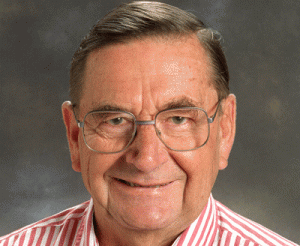
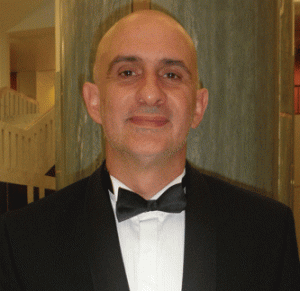
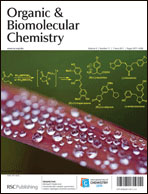 The outside cover features work by Michael Doyle and colleagues at University of Maryland. They talk about catalytic C-H insertion processes in comparison with other approaches for the synthesis of selected synthetic targets, lactones and lactams, which have been of biological or medicinal interest. It is a very interesting and original review article. Read more at
The outside cover features work by Michael Doyle and colleagues at University of Maryland. They talk about catalytic C-H insertion processes in comparison with other approaches for the synthesis of selected synthetic targets, lactones and lactams, which have been of biological or medicinal interest. It is a very interesting and original review article. Read more at